Most users struggle to get reliable results from AI tools because prompts are often vague or ineffective. Without clarity, AI models like ChatGPT, Claude, or Gemini can produce outputs that are irrelevant, inconsistent, or shallow. That means wasted time refining output, frustration with unexpected or inaccurate responses, and missed opportunities to unlock AI’s true potential. Artificial intelligence tools are only as good as the instructions you give them. Those instructions are called AI prompts. Whether you are generating marketing copy, analyzing customer data, or creating automated workflows, understanding AI prompting is the key to getting consistent, high‑quality results. In this article, we’ll explain what AI prompts are, how they work, and best practices for writing AI prompts that deliver actionable, accurate outputs for your business.
Turn hours of work into minutes with AI-powered workflows
What Is an AI Prompt?
An AI prompt is a piece of text, a question, or a command that you provide to an artificial intelligence model to guide its response. In simple terms, it instructs predictive and generative AI on what to do.
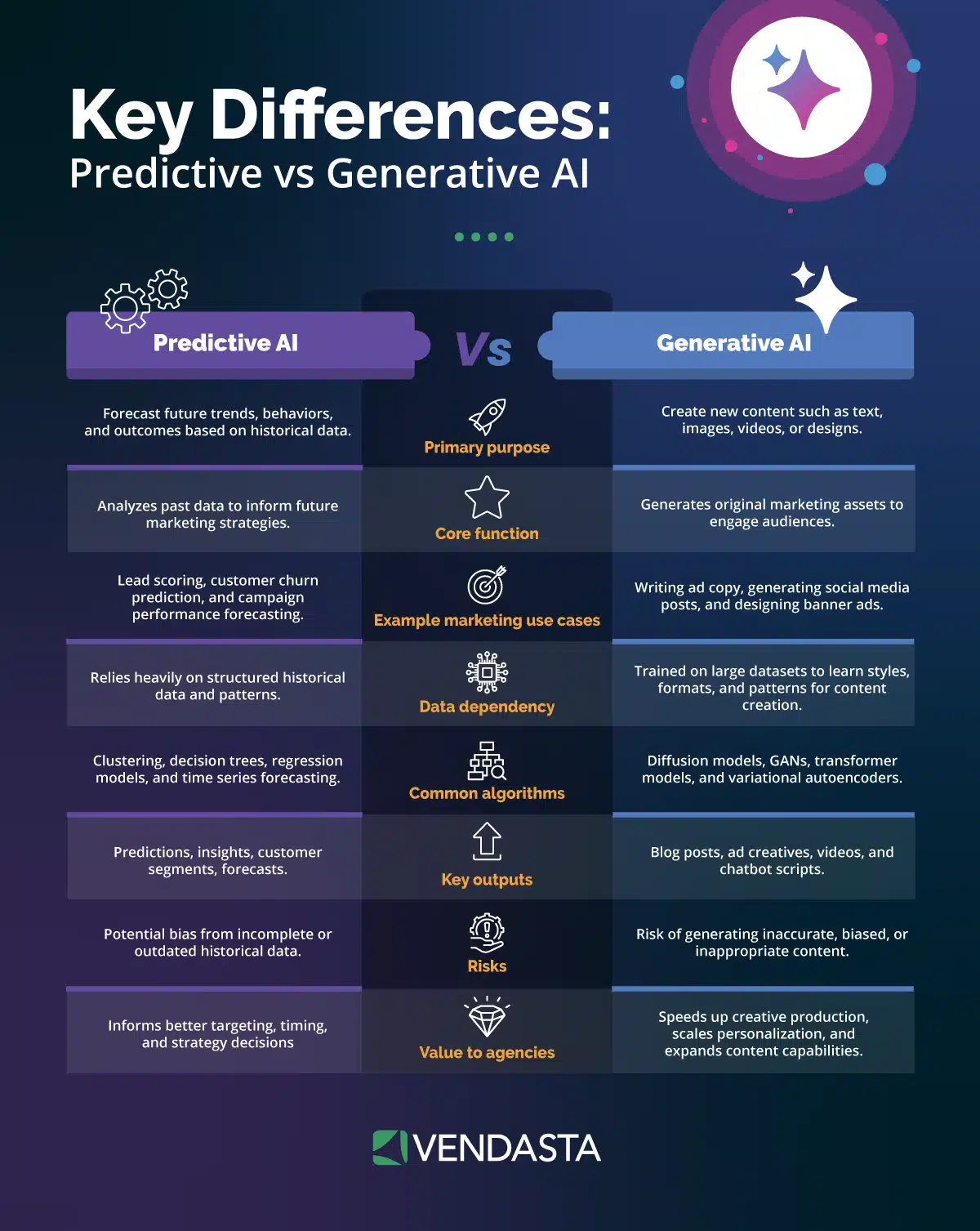 Examples of AI prompts include:
Examples of AI prompts include:
- “Write a 200‑word social media post for a summer sale at a local bakery.”
- “Summarize this customer review in one sentence, highlighting the main sentiment.”
- “Generate 10 blog title ideas about small business marketing trends for 2025.”
AI models use your prompt as context to generate relevant output, whether that’s text, code, images, or insights.
Types of AI Prompts
AI prompts come in different forms depending on how you want to guide the model’s output. Understanding the main types helps you choose the right approach for your goal:
- Instruction Prompts: These prompts tell the AI exactly what to do, such as “Summarize this article in three bullet points.” They are direct and highly effective for task-oriented outputs.
- Contextual Prompts: These provide background or context to influence the AI’s response. For example, “You are a professional copywriter. Write a social media post announcing a new product launch.”
- Few-Shot Prompts: These include examples of the desired output to help the AI understand the expected format and tone. For instance, providing two sample customer emails before asking the AI to generate a third one.
- Zero-Shot Prompts: These give the AI a task without examples, relying solely on its training. Example: “Translate this paragraph into French.”
- Chain-of-Thought Prompts: These guide the AI to explain its reasoning step by step, useful for problem-solving or analysis tasks. Example: “Explain your reasoning before giving the final answer to this math problem.”
Use Cases of AI Prompts
AI prompts power a wide range of practical applications in 2025, helping businesses and professionals work smarter:
- Content Creation and Marketing: Write blog posts, social media captions, product descriptions, or ad copy efficiently while maintaining brand tone.
- Customer Support Automation: Draft customer service responses or FAQs using prompts designed to match company policies and tone.
- Data Analysis and Reporting: Prompt AI to interpret datasets, summarize insights, and generate business intelligence reports.
- Learning and Research: Use prompts to simplify academic research, create study guides, or generate summaries of long technical documents.
- Software Development: Generate code snippets, explain errors, or produce test cases using structured prompts.
- Decision Support: Combine chain-of-thought prompting with organizational data to simulate decision scenarios or risk analyses.
Why Is AI Prompting Important in 2025?
In 2025, AI models like ChatGPT, Claude, Gemini, and multimodal interfaces are woven into business operations—from marketing and customer service to content automation and strategic decision-making to achieve the ultimate goal of customer journey automation. 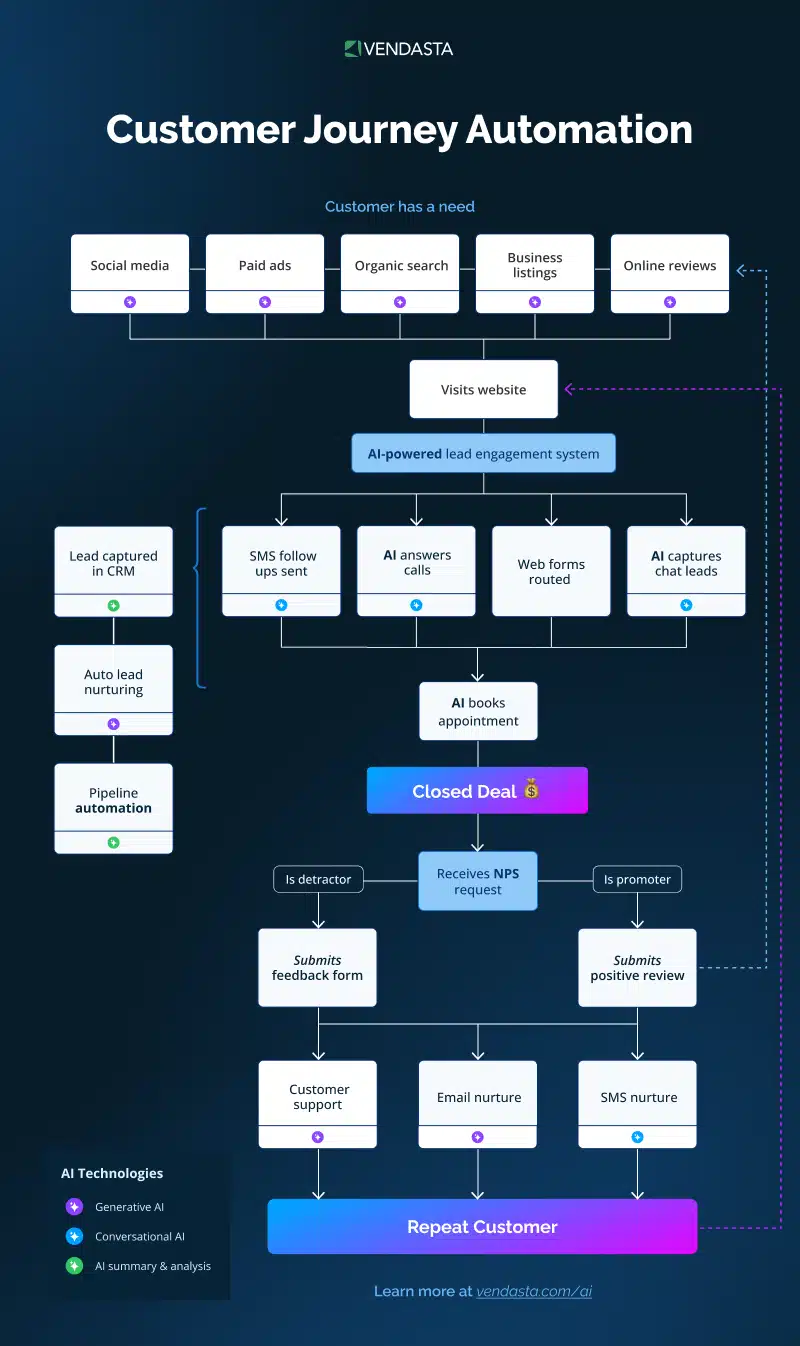 Generating accurate, reliable, and brand-aligned output hinges on one essential skill: AI prompting. What you ask—and how you ask it—shapes what you get.
Generating accurate, reliable, and brand-aligned output hinges on one essential skill: AI prompting. What you ask—and how you ask it—shapes what you get.
1. Precision Matters: Delivering High-Quality Output
Generative AI has become remarkably adept, but to unlock its full potential, you still need clear, structured, and contextual prompts. Providing specific instructions such as formatting, tone, role, audience, and constraints enables the AI to work more effectively and stay on target.
2. Efficiency and Consistency: Minimize Errors and Rework
Ambiguous prompts lead to drift, hallucinations, and wasted time. Teams that invest in refining prompts iteratively avoid misalignment, reduce editing overhead, and achieve consistent messaging at scale.
3. Competitive Advantage: Prompting as a Strategic Differentiator
In 2025, leading organizations treat prompt engineering as an operational discipline, not just a creative task. They are building “digital factories”—automated ecosystems where generative AI models produce repeatable, high-quality outputs under strict governance. These factories are powered by:
- MLOps Pipelines for Prompt Automation: Prompts are treated like software code, versioned, tested, and deployed through machine learning operations (MLOps) pipelines. This ensures updates to AI workflows happen systematically and that every team uses the latest, most effective prompt structures.
- Deterministic Governance: Risk-aligned governance means prompts, model selections, and data sources follow strict policies to reduce bias, hallucinations, or compliance breaches. Approvals, auditing, and human-in-the-loop review processes help maintain trust in outputs.
- Prompt Frameworks and Templates: Instead of ad-hoc instructions, teams use prompt libraries or frameworks—structured templates with predefined roles, tone, style, and formatting. These frameworks let marketing, sales, and support teams produce brand-consistent content without reinventing prompts for each task.
- Scalable Content Production: With repeatable prompt frameworks feeding AI models, organizations can scale to hundreds or thousands of outputs—emails, social posts, blogs, or client reports—while maintaining consistency, compliance, and quality.
4. Ethical & Reliable AI: Guarding Against Bias and Hallucinations
In 2025, organizations prioritize accuracy and trust. Techniques like chain-of-thought prompting, few-shot examples, and asking the AI to cite sources are widely used to reduce misinformation and hallucinations. Moreover, clearly stating roles (e.g., “act as a social media strategist”) helps align results with purpose.
5. Prompting = Universal Business Skill, Not Just “Technical”
Prompt engineering is no longer siloed in IT. It’s a business discipline embedded in marketing, operations, customer success, and content strategy. Professionals—from copywriters to analysts—are leveraging prompting frameworks to get dependable outputs without needing coding skills.
Summary: Why AI Prompting Is Critical in 2025
| Key Benefit | Why It’s Important in 2025 |
|---|---|
| Quality & Precision | Clear prompts produce accurate, relevant output reliably |
| Operational Efficiency | Reduces back-and-forth, saving time and editing cycles |
| Strategic Scalability | Enables enterprise-wide AI adoption with governance & consistency |
| Ethical & Reliable Output | Minimizes hallucinations, bias; ensures regulatory alignment |
| Cross-Functional Relevance | A vital competency for marketers, agencies, MSPs—not just developers |
AI Prompting vs. Prompt Engineering: What’s the Difference?
TL;DR:
- AI Prompting refers to writing clear, effective commands to get useful results from AI.
- Prompt Engineering is the systematic process of designing, optimizing, and governing those prompts for scalable, reliable use across teams.
What Is AI Prompting?
AI prompting is simply the act of communicating with an AI model—by typing in a question, instruction, or command—so that the model produces a response. Whether you’re drafting an email, brainstorming blog topics, or summarizing data, your prompt determines the AI’s output quality. The more descriptive and detailed your prompts, the better the AI can respond. It’s important to keep in mind that effective prompts pay attention to four key areas: persona, task, context, and format. Also, picking a single goal or task to avoid overload helps with receiving clear outputs.
What Is Prompt Engineering?
Prompt engineering is the structured practice of designing, refining, and optimizing prompts to guide AI models toward accurate, reliable, and context-aware outputs. While basic prompting focuses on asking a single question or command, prompt engineering is about systematic and repeatable control over how AI responds. According to Google Cloud, prompt engineering is “the art and science of creating precise and optimized prompts that produce the desired outcomes consistently.” This makes it particularly valuable for businesses that need AI to perform at scale, from generating marketing content to summarizing customer insights.
Key Differences Between AI Prompting and Prompt Engineering
| Aspect | AI Prompting | Prompt Engineering |
|---|---|---|
| Definition | The act of giving instructions to an AI model to get a desired response. | The systematic process of designing, refining, and optimizing prompts for consistent, high-quality outputs. |
| Goal | Quickly generate useful responses from AI with minimal setup. | Ensure reliable, scalable, and context-aware AI outputs for complex or high-stakes tasks. |
| Complexity | Simple and often one-off; does not require deep AI expertise. | Advanced; requires understanding model behavior, limitations, and prompt frameworks. |
| Process | Enter a command or question and review the output. | Iteratively design prompts, apply few-shot or chain-of-thought methods, and test results for consistency. |
| Use Cases | Casual content creation, brainstorming, quick Q&A. | Enterprise applications, automated workflows, decision support, and multi-step reasoning. |
| Example Prompt | “Summarize this article in 100 words.” | “Analyze this article as a data analyst, extract 3 key insights with supporting evidence, and present them in a structured report.” |
| Business Impact | Fast ideation and initial drafts for marketing, emails, or research. | Reliable, repeatable AI processes for customer service, operations, product development, and reporting. |
Key Elements of an Effective AI Prompt
Crafting effective AI prompts isn’t just about typing words—it’s about strategically combining several core elements to unlock high-quality results from the AI model. Pro Tip: Check out our blog on AI models benchmark for insights on how to pick an AI model. 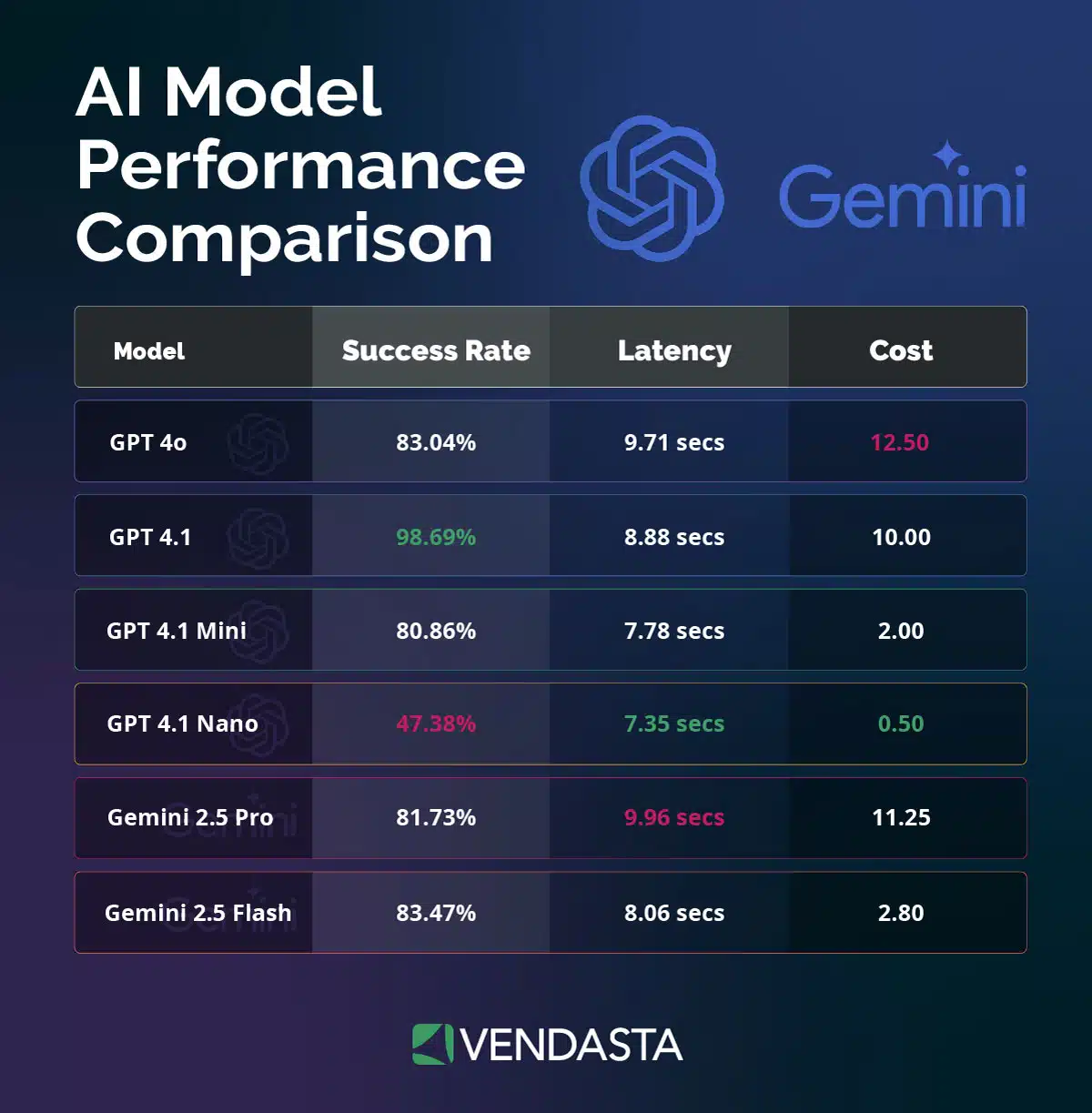
1. Persona or Role Definition
Assigning a role sets the tone, expertise, and perspective for the AI’s response. This step tells the model how to approach the task. Tips for better results:
- Choose a role that reflects your industry or goal (e.g., “customer support agent,” “social media manager,” “B2B sales rep”).
- Specify the experience level or approach if relevant (e.g., “an experienced marketing strategist,” “a friendly junior support agent”).
- Include a behavioral note to guide tone and personality.
Example Prompt: “Act as a friendly and knowledgeable social media manager for a small bakery. Your posts should showcase fresh pastries and encourage local foot traffic.”
2. Context & Background
Context ensures the AI understands who, what, and why behind the request. Without it, responses can feel generic. Tips for better results:
- Share your industry, audience, and goals upfront.
- Highlight constraints such as compliance requirements, brand tone, or word count.
- Mention any unique value proposition (e.g., “family-owned,” “eco-friendly products”).

Example Prompt: “We are a family-owned bakery serving a local neighborhood audience. Our goal is to increase Instagram engagement and foot traffic for our seasonal pastries. Posts should be cheerful, approachable, and under 100 words.”
3. Task or Output Specification
Defining the deliverable avoids vague or off-target responses. Tips for better results:
- Clearly state the desired output (blog, ad copy, headline ideas, FAQ list).
- Include format, length, and tone requirements.
- Break down multi-step tasks into specific outputs.
Example Prompt: “Create a 5-post Instagram content plan in table format. Include post ideas, suggested captions, and relevant hashtags. Keep captions under 80 words with a friendly tone.”
4. Examples & Demonstrations (Few‑Shot Learning)
Providing example outputs guides the AI toward your desired style and structure. Tips for better results:
- Include 1–3 strong examples of your preferred output.
- Use a mix of text, tone, or formatting examples as references.
- Highlight the exact style or depth you want the model to replicate.
Example Prompt: “Here’s an example of the style we want:
- Post: ‘Celebrate the weekend with our fresh strawberry tarts!’
- Hashtags: #LocalBakery #FreshDaily Now, create 3 more posts in this style for our chocolate croissant promotion.”
5. Prompt Structure & Clarity
Organized prompts make it easier for AI to follow instructions and reduce confusion. Tips for better results:
- Use headers or labels like Role:, Context:, Task:, Output:.
- Separate each instruction into a clear line or paragraph.
- Avoid stacking multiple complex requests into one long sentence.
6. Iterative Refinement
Prompting is rarely perfect on the first try. Use feedback loops to improve output quality. Tips for better results:
- Ask the AI to refine or expand its response (e.g., “Make this sound friendlier” or “Rewrite this as a 3-step guide”).
- Experiment with variations—adjust tone, structure, or context for better alignment.
- Use chain-of-thought prompting by asking AI to explain how it reached its answer, then refine from there.
Example Workflow:
- Start with a base prompt.
- Review AI output and note gaps.
- Add clarifications (tone, audience, format).
- Re-run prompt for improved results.
7. Power Words & Tone Signals
Words like “actionable,” “concise,” “insightful,” or “bullet‑pointed” help guide tone, clarity, and focus.
Power Words
Power words are attention-grabbing terms that add emotion, urgency, or clarity to your AI-generated content. They make copy more compelling and reader-focused.
Emotional Power Words
- Amazing
- Inspiring
- Shocking
- Unbelievable
- Heartwarming
- Eye-opening
- Captivating
- Transformative
- Game-changing
- Jaw-dropping
Persuasive and Action-Oriented Words
- Proven
- Exclusive
- Guaranteed
- Limited
- Essential
- Breakthrough
- Step-by-step
- Effective
- Powerful
- Results-driven
Curiosity and Engagement Words
- Secret
- Hidden
- Unlock
- Discover
- Rare
- Little-known
- Behind-the-scenes
- Insider
- Unexpected
- Revealed
Urgency and FOMO Words
- Now
- Today
- Limited-time
- Last chance
- Hurry
- Don’t miss
- Ending soon
- Act fast
- Only
- Exclusive offer
Tone Signals
Tone signals are keywords or instructions that tell AI how to sound. They shape the style, formality, and emotional direction of the output.
Professional and Formal Tones
- Authoritative
- Analytical
- Businesslike
- Objective
- Technical
- Data-driven
- In-depth
- Clear and concise
- Evidence-based
- Expert
Conversational and Friendly Tones
- Relatable
- Warm
- Casual
- Playful
- Engaging
- Approachable
- Encouraging
- Story-driven
- Human
- Lighthearted
Inspirational and Motivational Tones
- Uplifting
- Visionary
- Empowering
- Positive
- Encouraging
- Aspirational
- Ambitious
- Passionate
- Hopeful
- Confident
Persuasive and Sales-Driven Tones
- Urgent
- Compelling
- Persuasive
- Benefits-focused
- Results-oriented
- Trust-building
- Actionable
- Exclusive
- Conversion-focused
- High-impact
Below is the core anatomy of an effective AI prompt: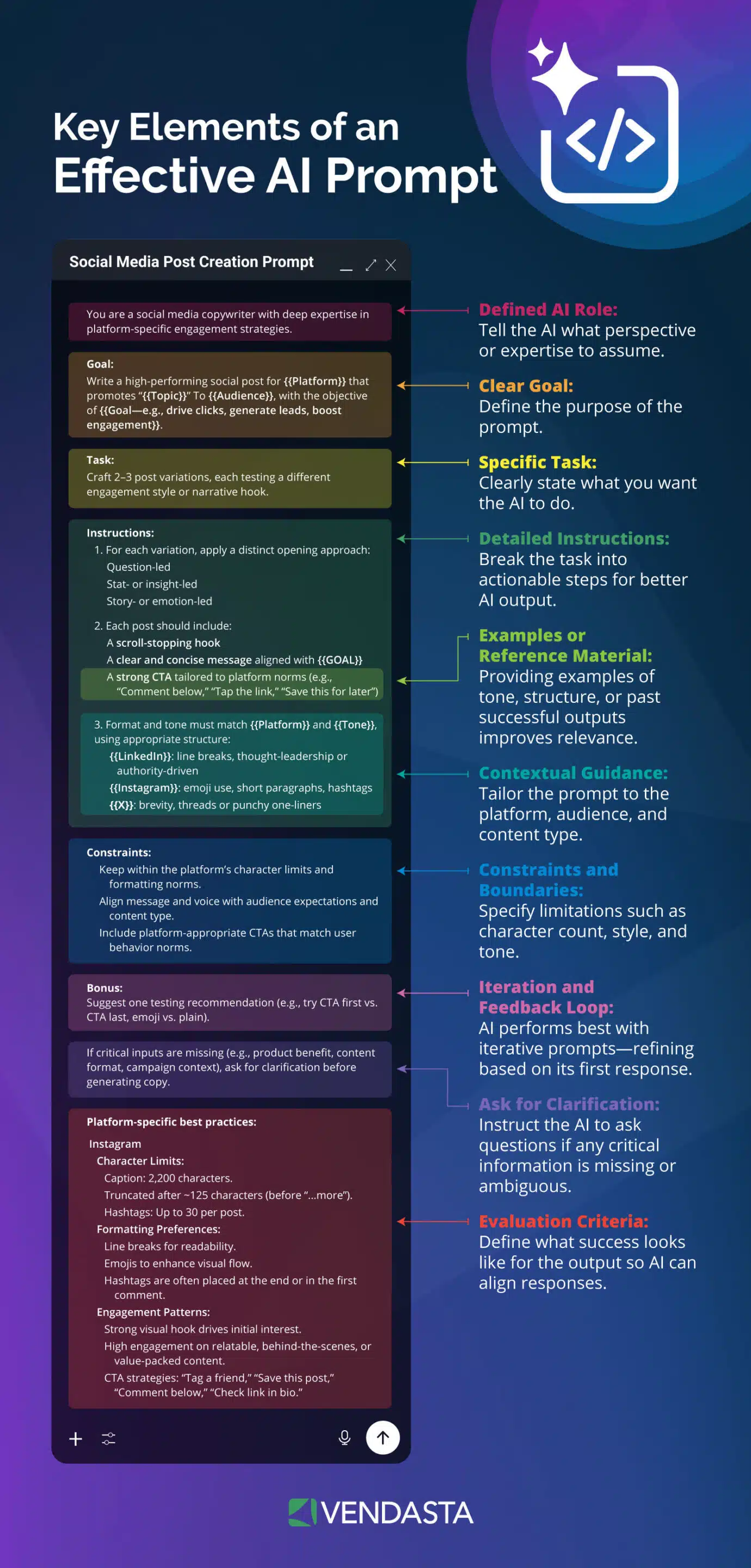
Prompt Writing Best Practices
| Category | Best Practice | Why It Matters | Example Prompt |
|---|---|---|---|
| Clarity & Specificity | Be clear and unambiguous about the task. | AI performs best when it knows exactly what is expected. | “Write a 200-word LinkedIn post about AI trends for SMBs, focusing on 2025 stats.” |
| Context & Background | Provide context, role, or background information. | Gives AI the necessary framing to produce relevant outputs. | “As a SaaS marketing strategist, create a 5-step email nurture sequence for leads.” |
| Structure & Formatting | Specify output format, style, and structure. | Ensures results are organized and ready to use. | “Generate a comparison table of 5 CRM tools with pros, cons, and pricing.” |
| Tone & Voice | Indicate tone, voice, or brand style. | Maintains consistency with brand identity or audience expectations. | “Write a blog intro in a professional yet friendly tone targeting MSPs.” |
| Perspective & Role | Assign a role or perspective to the AI. | Helps AI adopt the right expertise and viewpoint. | “Act as a social media manager and write 3 engaging Instagram captions.” |
| Include Power Words | Use emotional, persuasive, or engaging words. | Makes outputs more compelling and audience-focused. | “Craft a headline using words like ‘proven’ or ‘essential’ for a marketing guide.” |
| Step-by-Step Instructions | Break complex tasks into steps or sections. | Reduces ambiguity and improves accuracy. | “List 5 benefits of white-label AI software, then provide a 2-sentence summary.” |
| Constraints & Limitations | Set boundaries like word count, format, or scope. | Keeps output concise and aligned with requirements. | “Summarize this 2,000-word report in under 150 words with 3 bullet points.” |
| Examples & References | Show examples or reference content for style. | AI mimics structure, tone, and style more effectively with examples. | “Write a blog intro similar in style to this sample: [insert excerpt].” |
| Iteration & Refinement | Start broad, then refine with follow-ups. | Improves output quality through feedback loops. | “Draft a cold email. Then rewrite it to sound more conversational.” |
| Audience Awareness | State who the audience or reader is. | Aligns content to audience interests and comprehension level. | “Write a short guide on digital marketing for non-technical small business owners.” |
| Use AI-Friendly Formatting | Request headings, bullet points, and tables. | Enhances readability and optimizes for SEO and AI summarization. | “Create a 7-step SEO checklist with headings and bullet points for each step.” |
| Goal Orientation | Communicate the end goal or purpose of the content. | Ensures the output is actionable and fits your objective. | “Generate a blog outline designed to rank for the keyword ‘AI for small businesses.’” |
| Avoid Overloading | Keep instructions focused and avoid long, messy asks. | Too many requirements can confuse the AI or dilute the output quality. | “Instead of asking for 10 tasks at once, break them into sequential prompts.” |
| Knowing the Model Capabilities | Understand what the AI can and cannot do. | Aligning prompts to the model’s strengths improves accuracy and creativity. | Use AI to generate blog outlines, summaries, or step-by-step guides—avoid asking for live web data if not supported. |
| Leverage Strengths | Use AI for ideation, structuring, summarizing, and rewriting. | Focuses the AI on tasks it excels at for faster, higher-quality outputs. | “Brainstorm 10 blog ideas for AI in small business marketing, then rank them by potential traffic.” |
| Work Around Limitations | Avoid prompts requiring real-time or undisclosed info. | Ensures realistic expectations and avoids hallucinations. | “Summarize known trends for AI marketing in 2025” instead of “Predict next week’s AI product launches.” |
Real‑World AI Prompting Examples
Seeing examples in action brings theory to life—and helps you build prompts that work on demand in real business scenarios. One of Vendasta’s partners, Live 360 Marketing, successfully leverages AI prompting to create industry‑specific AI scripts for the AI receptionist that enhance client communications. 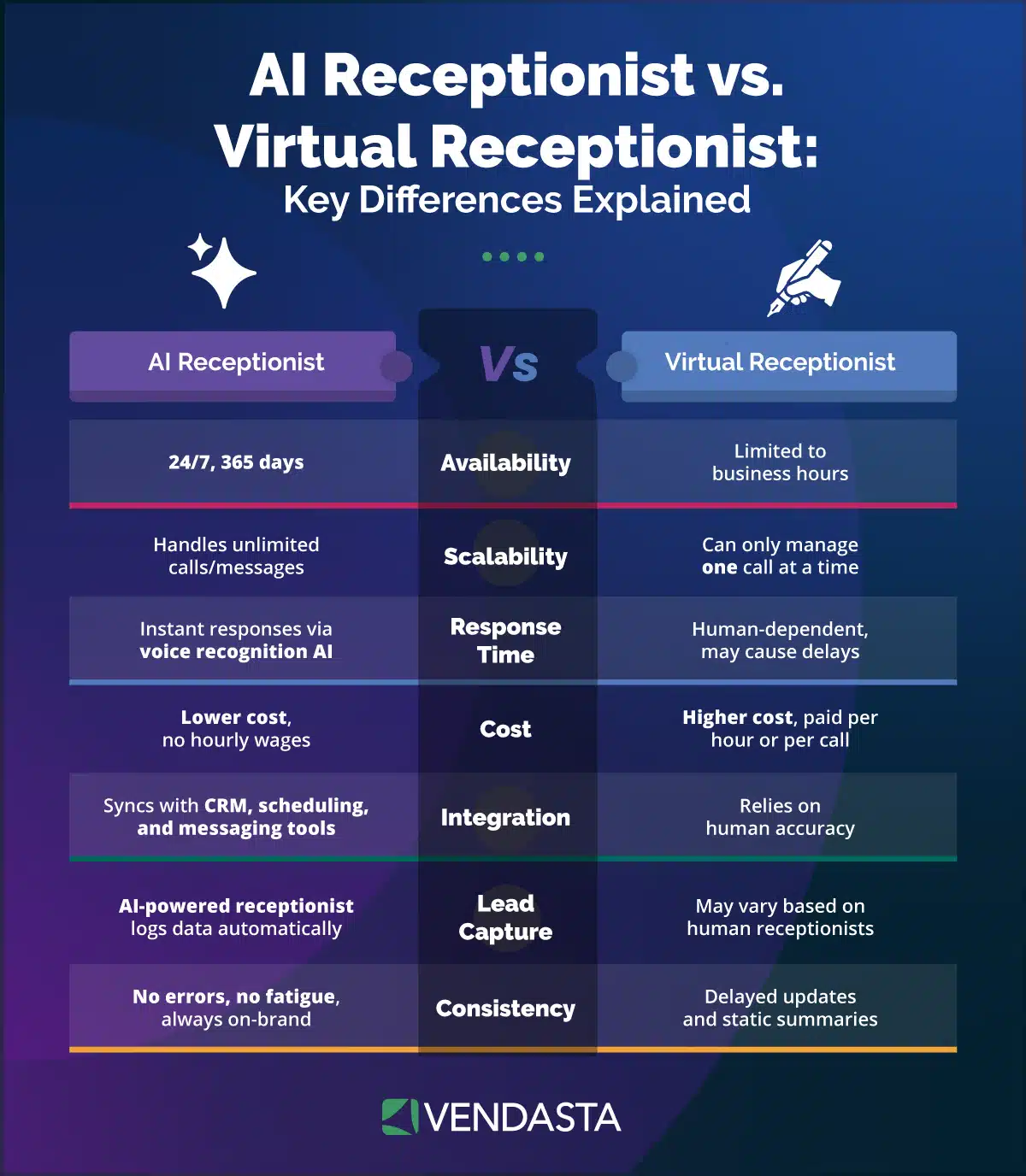 By tailoring prompts to the unique needs of each industry, they ensure the AI responds with professionalism, clarity, and relevance. Below are examples of how AI prompting can be applied to optimize client interactions.
By tailoring prompts to the unique needs of each industry, they ensure the AI responds with professionalism, clarity, and relevance. Below are examples of how AI prompting can be applied to optimize client interactions.
1. Roofing Company Lead Handling
Prompt Example: “You are a professional AI receptionist for a residential roofing company. Greet callers warmly, gather their name, address, and roof issue details, and offer to schedule a free inspection within the next two business days. Be friendly yet concise.” Result: The AI consistently captures complete lead details while reflecting the company’s brand voice in the continuous loop of AI lead generation.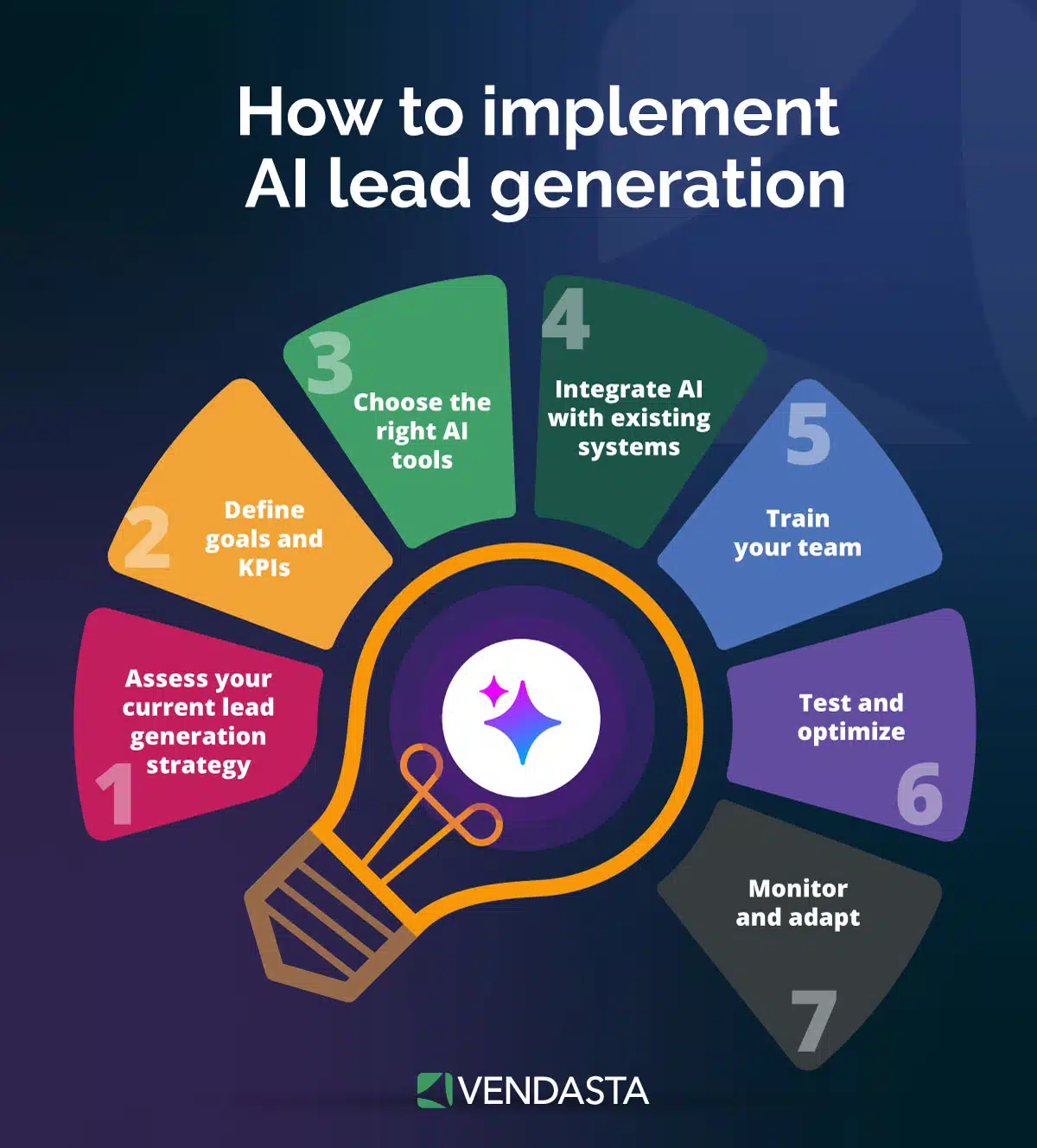
2. Plumbing Service Emergency Response
Prompt Example: “You are a 24/7 emergency plumbing assistant. When someone contacts the service, quickly confirm their location, identify the type of plumbing emergency (leak, burst pipe, clogged drain), and assure them that a technician can be dispatched within the hour. Maintain a calm and reassuring tone.” Result: Customers feel supported during stressful emergencies, and the agency reduces missed service opportunities with the help of lead automation. 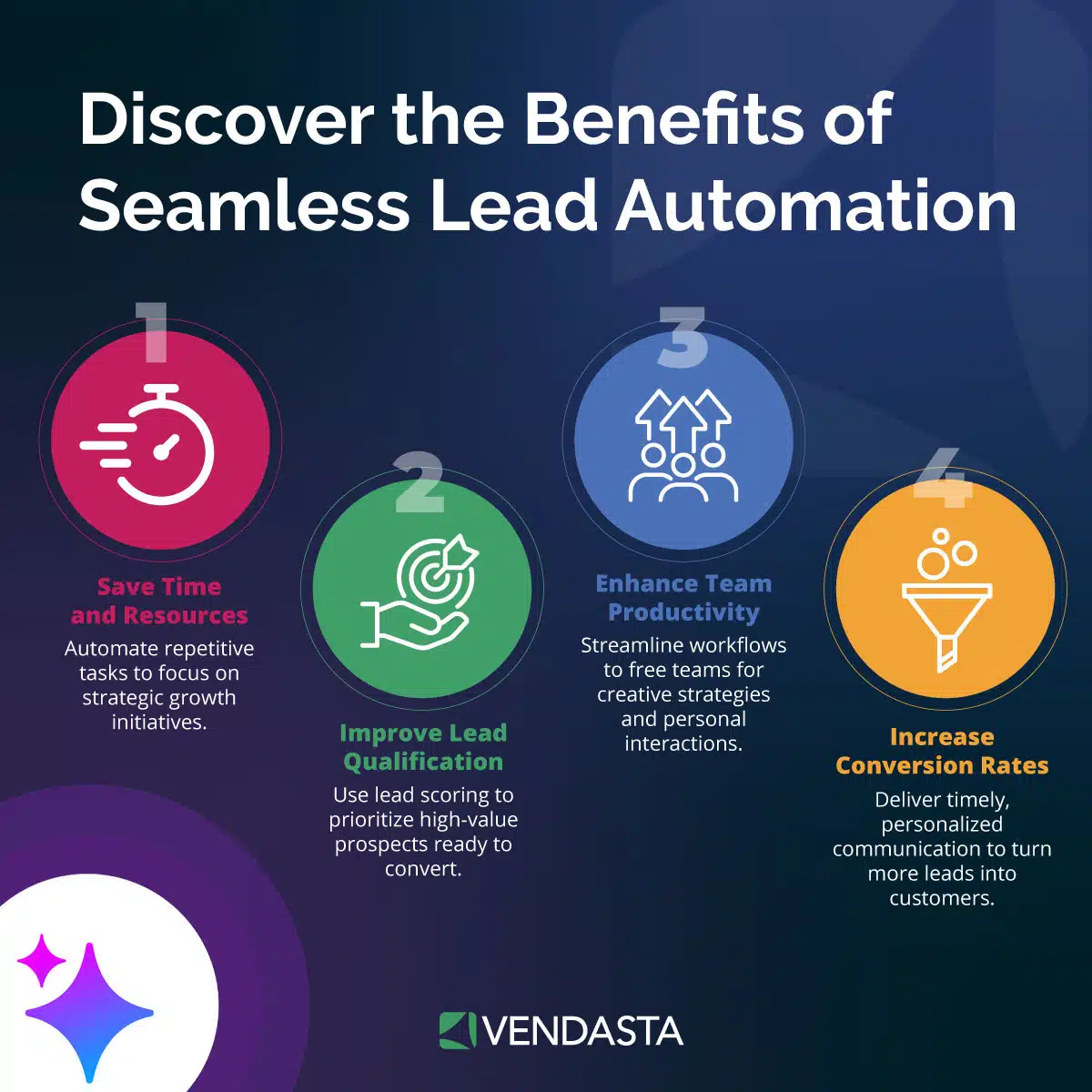
3. Real Estate Inquiry Follow‑Up
Prompt Example: “You are a professional virtual assistant for a real estate agency. When a lead asks about a property, provide a brief description, highlight one unique feature, and offer to book a viewing. Keep the tone friendly, knowledgeable, and persuasive.” Result: Prospective buyers receive immediate, personalized follow‑ups, improving lead engagement and conversion.
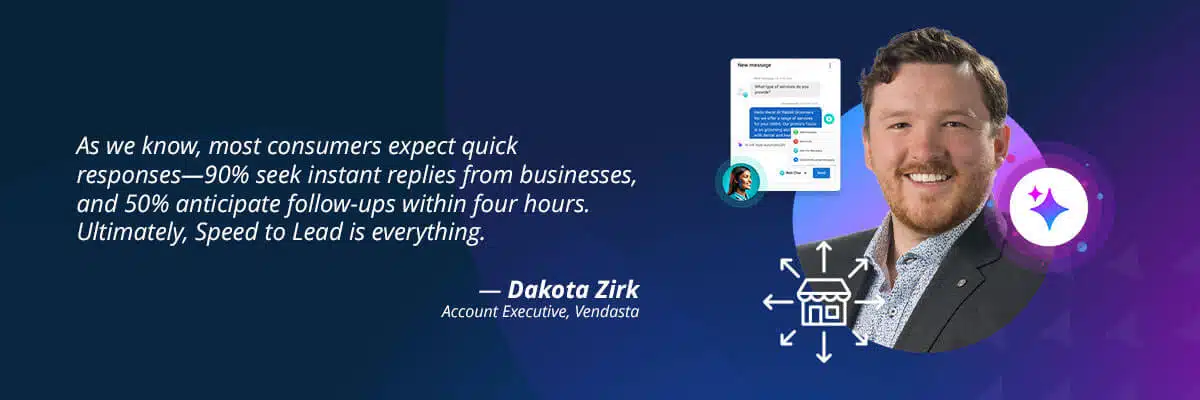 Tip: Want to see how partners are driving a 55% conversion rate with AI? Check out the blueprint here: AI Receptionist Prompting.
Tip: Want to see how partners are driving a 55% conversion rate with AI? Check out the blueprint here: AI Receptionist Prompting.
How to Start AI Prompting Like a Pro
Mastering AI prompting in 2025 is about clarity, context, structure, and iteration.
| Step | What to Do |
|---|---|
| 1. Framework | Use R‑O‑C (Role, Output, Context) |
| 2. Persona | Define a relevant role |
| 3. Format | Specify structure and limits |
| 4. Context | Anchor with relevant background |
| 5. Examples | Include few-shot formats |
| 6. Language | Keep prompts concise and clear |
| 7. Iterate | Refine with feedback loops |
| 8. Advanced | Use chain‑of‑thought when needed |
| 9. Alignment | Match tasks to model strengths |
Download 100+ Ready-to-Use AI Prompts
If you are ready to supercharge your marketing automation workflows with AI, our ebook is the perfect starting point. This guide is packed with actionable, pre-built prompts designed to help you:
- Generate engaging social media posts and captions.
- Create high-performing ad copy and email campaigns.
- Brainstorm blog topics, outlines, and SEO-friendly content.
- Streamline client reporting and performance analysis.
Whether you manage multiple SMB clients or focus on growing your own business, these prompts will save time, improve creativity, and unlock consistent results. Download Vendasta’s ebook, 100 AI Prompts Every Marketer Needs, and start using AI like a pro.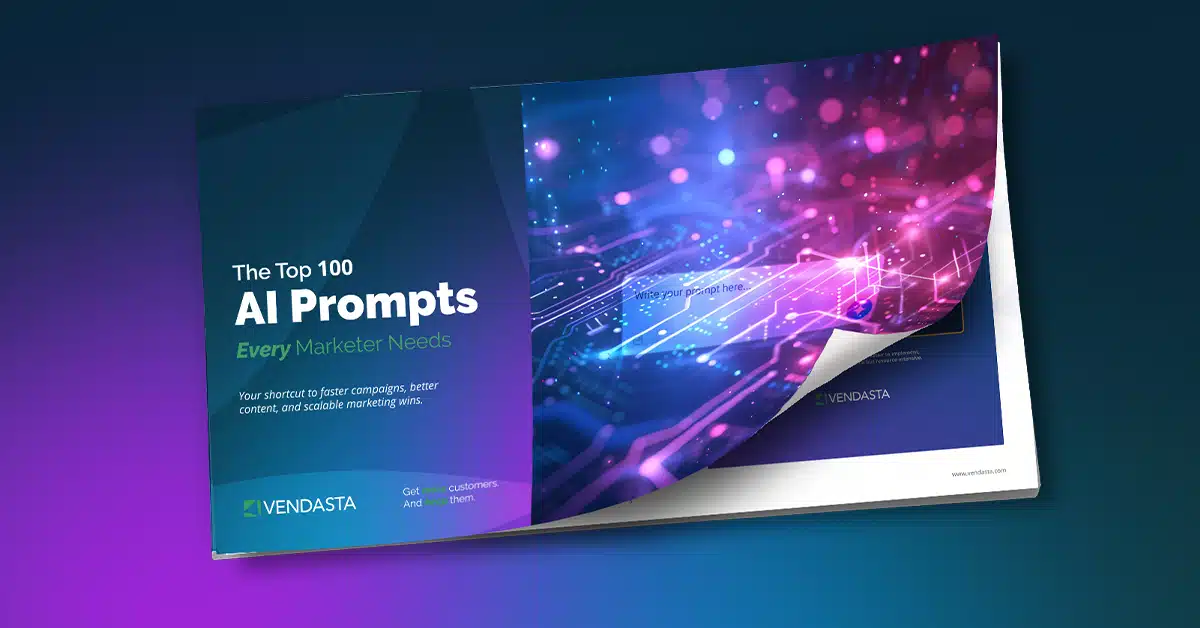
How to Scale AI Prompting with Vendasta
Scaling AI prompting effectively requires more than just writing good prompts—it involves leveraging AI marketing tools, automation, and structured workflows to generate consistent, high-quality outputs across your business. Vendasta makes this process seamless by combining AI employees, integrated data, and automated workflows for partners and SMBs.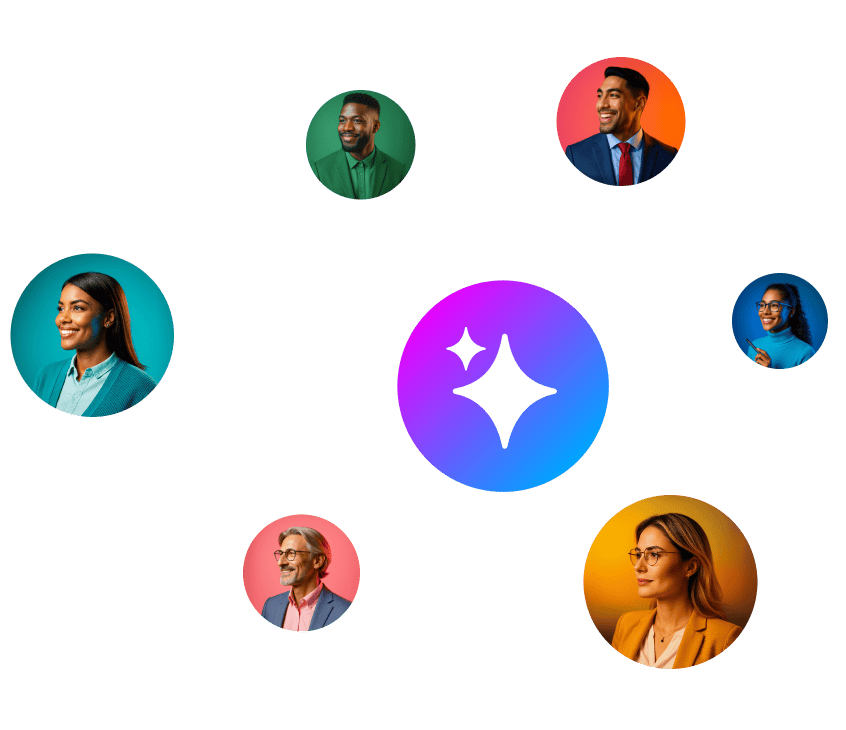 Here’s how you can scale your AI prompting strategy with Vendasta:
Here’s how you can scale your AI prompting strategy with Vendasta:
1. Centralize Your Prompts and Data
Rather than juggling multiple disjointed AI tools, Vendasta’s AI-powered customer acquisition and engagement platform connects your customer data, marketing assets, and operational workflows. 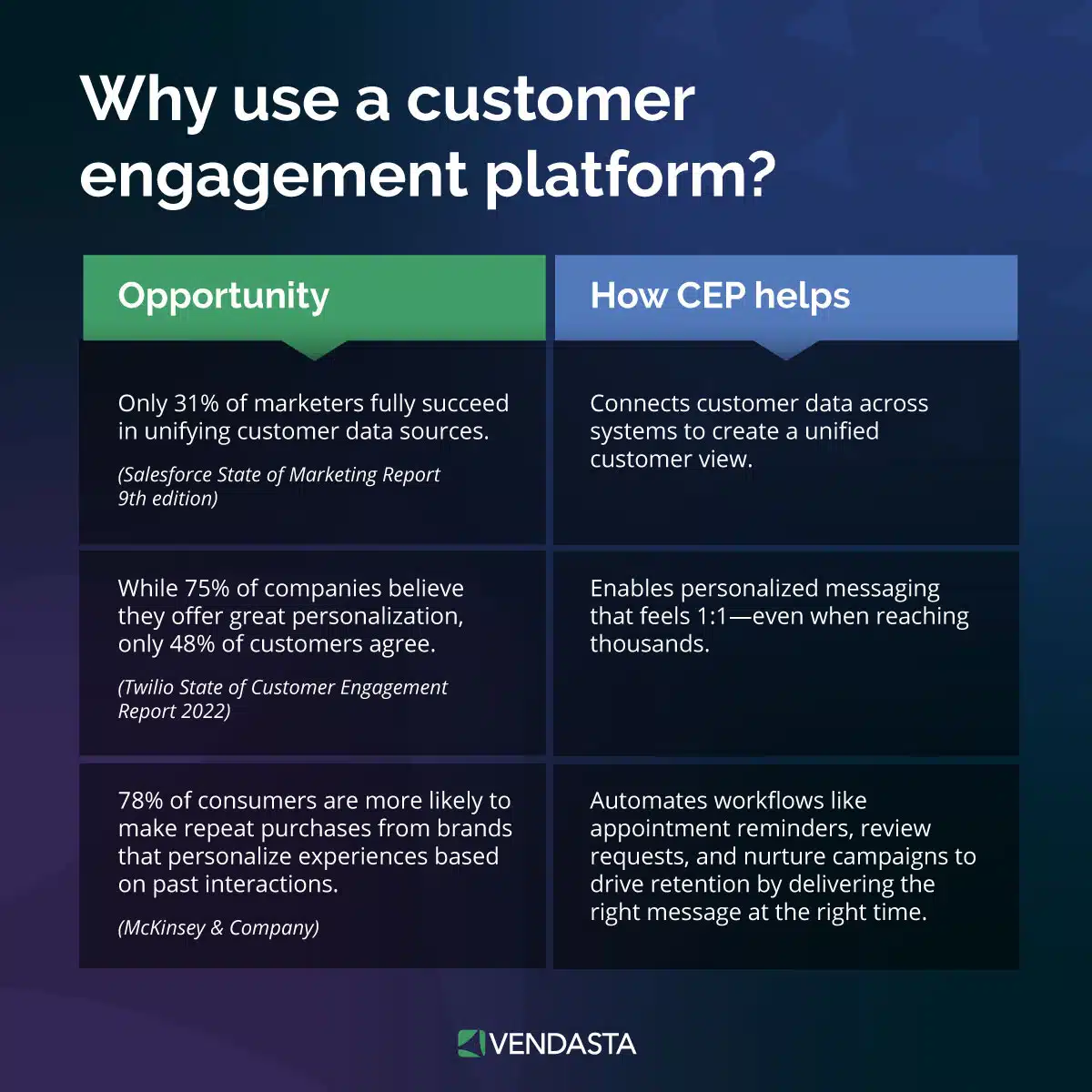 By leveraging a single system, you can:
By leveraging a single system, you can:
- Have AI employees pull from real customer data to generate hyper‑personalized campaigns.
- Maintain consistency in voice, tone, and branding across all outputs.
- Reduce the risk of repetitive or low‑quality results caused by siloed tools.
2. Automate Repeatable Tasks with AI Employees
Vendasta’s AI employees can take your well‑crafted prompts and scale them into automated workflows. For example:
- AI employees can generate social media posts, emails, or ad copy tailored to local audiences.
- An AI Receptionist powered by Conversations AI can handle front-line customer communication 24/7 while sounding natural, professional, and industry-specific.
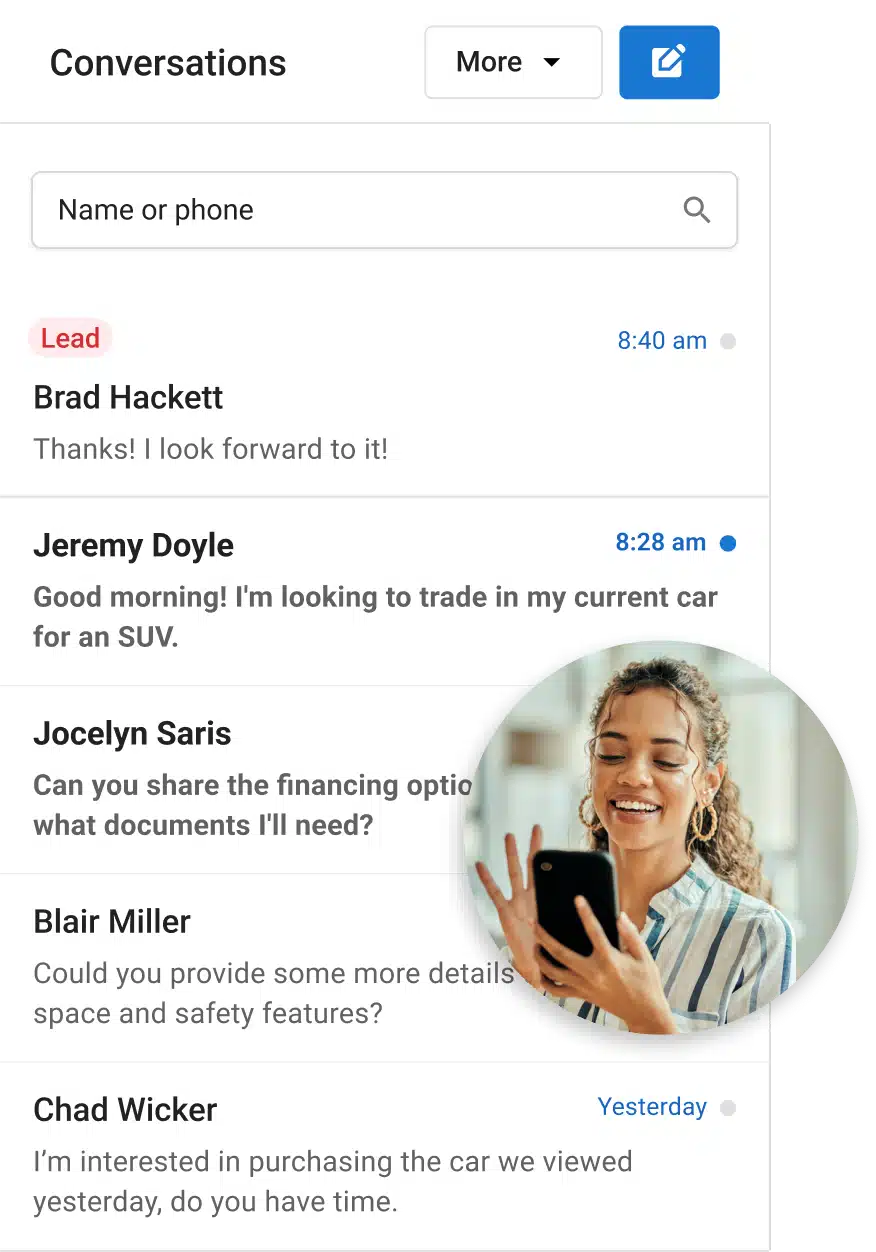 This automation allows partners—such as digital agencies, franchisors, and MSPs—to handle hundreds of client deliverables without increasing manual work.
This automation allows partners—such as digital agencies, franchisors, and MSPs—to handle hundreds of client deliverables without increasing manual work.
3. Integrate Prompting into the Customer Journey
Vendasta’s platform allows AI outputs to directly connect to your customer acquisition and engagement workflows. That means:
- Leads generated by AI automatically enter your CRM.
- Personalized follow‑ups and nurture sequences are triggered without manual input.
- AI outputs can flow seamlessly into your sales, marketing, and service processes, creating a full loop of automation.
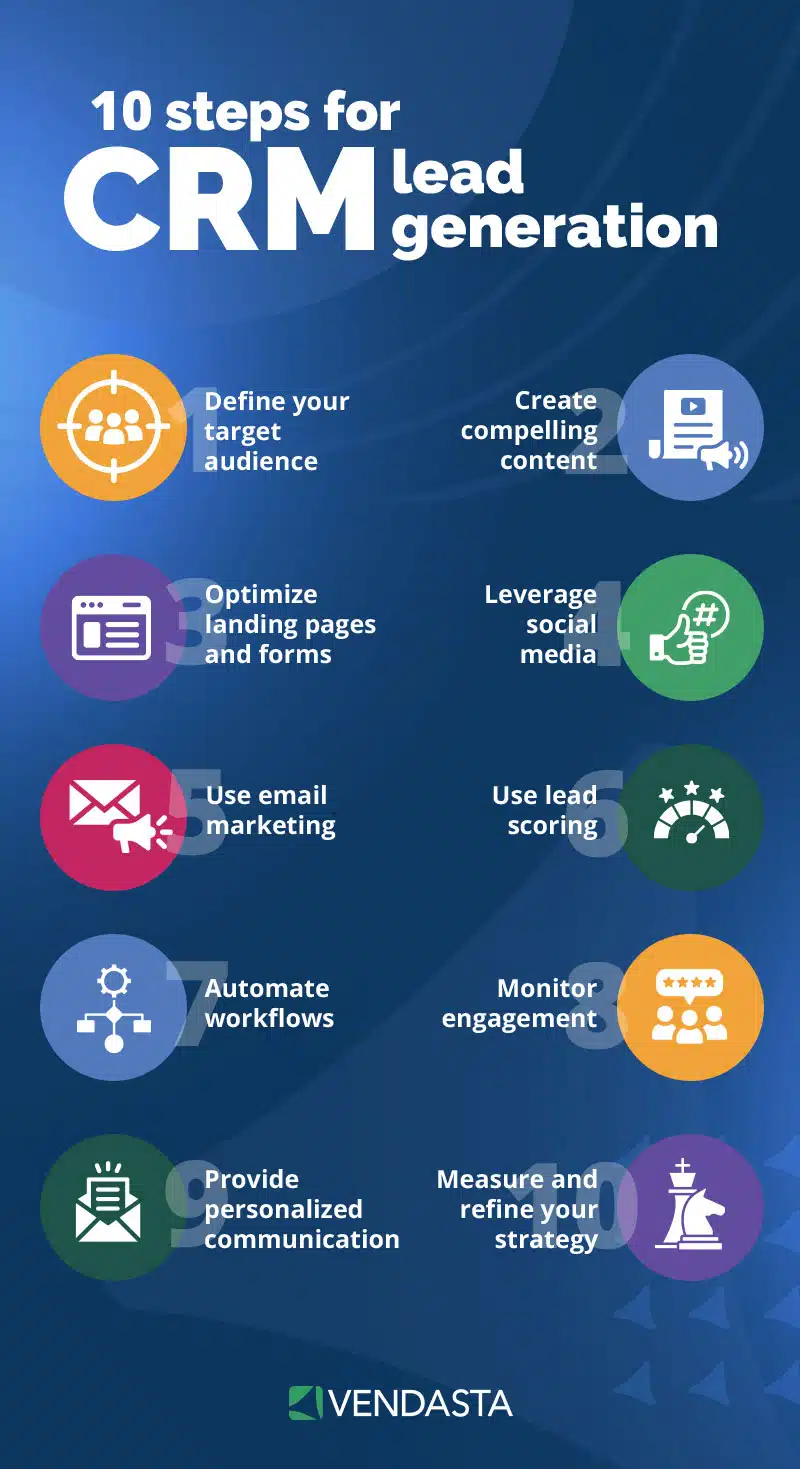
5. Use Iterative Testing to Improve at Scale
Scaling prompting doesn’t mean sacrificing quality. With Vendasta, you can use AI reporting dashboards to measure which AI‑generated campaigns drive the most leads or sales.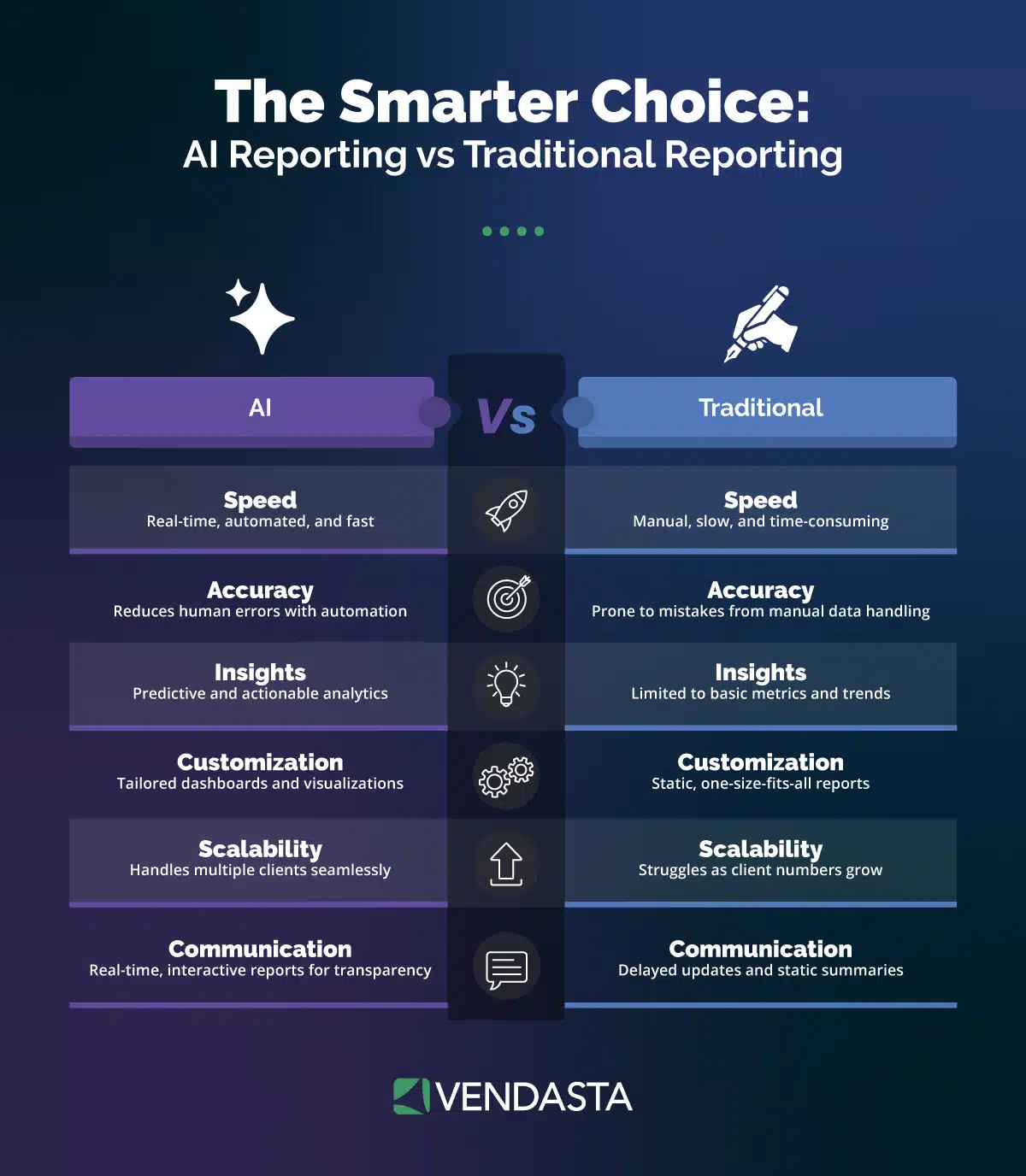 By combining prompt iteration with Vendasta’s automation and analytics, your AI strategy becomes self‑improving at scale. Book a free demo with Vendasta to learn more about our AI-powered solutions!
By combining prompt iteration with Vendasta’s automation and analytics, your AI strategy becomes self‑improving at scale. Book a free demo with Vendasta to learn more about our AI-powered solutions!
AI Prompting FAQs
1. What is AI prompting?
AI prompting is the process of giving instructions to an AI model to produce specific results, like social media posts, email campaigns, or customer responses. The clearer the prompt, the more accurate the AI output.
2. Why does prompt quality matter?
High-quality prompts generate precise, relevant, and creative AI responses. Poorly written prompts can result in vague or inaccurate outputs, which means more editing time.
3. How can I create better AI prompts?
Include details such as the task, audience, tone, and format. For example: “Write a friendly 50-word Facebook post promoting a new lunch menu at a local café” will perform better than simply asking, “Write a social post.”
4. What are some examples of AI prompts for marketers?
Examples include:
- Write a 5-email welcome sequence for new subscribers to a fitness studio.
- Summarize a 1,000-word blog into a 3-post Instagram carousel.
- Respond to a negative review politely and professionally for a dental clinic.
For 100+ ready-to-use prompts, download Vendasta’s ebook: 100 AI Prompts Every Marketer Needs.
5. What is prompt engineering?
Prompt engineering is the strategic practice of crafting AI prompts to get high-quality, targeted responses. It often involves testing different phrasing, examples, or contexts to optimize AI results.
6. Can I use AI prompts to scale my marketing efforts?
Yes. AI prompts let you quickly create social media content, emails, blog outlines, and customer replies. Vendasta’s AI tools allow agencies and SMBs to scale content creation efficiently without losing quality.
7. How does Vendasta help with AI prompting?
Vendasta provides an AI-powered customer acquisition and engagement platform with AI tools to generate emails, social posts, and customer communications. It helps agencies and SMBs save time and boost productivity.
8. Can AI prompting improve customer engagement?
Yes. When paired with tools like Vendasta’s Conversations AI, prompts are necessary to set up an AI receptionist that can handle inquiries, automate personalized responses, and engage leads 24/7.
9. What is an AI receptionist, and how does it use prompts?
An AI receptionist powered by Vendasta’s Conversations AI can:
- Greet website visitors in real time.
- Answer FAQs about services or pricing.
- Qualify leads and book appointments automatically.
- Transfer conversations to human staff when needed.
10. How do I provide context in an AI prompt?
Context includes brand voice, audience details, and content goals. For example: “Act as a social media manager for a family-owned pizza shop. Write a fun, engaging tweet about a two-for-one weekend special with 3 relevant hashtags.”
11. Can I reuse prompts for multiple campaigns?
Yes. Strong prompt templates can be customized and scaled across campaigns, clients, or platforms. Vendasta allows you to store and reuse AI prompts in your workflow for consistency and speed.
12. How do I fix generic AI responses?
If outputs feel generic, add more details, examples, or constraints. For example, specify “Write in a playful tone for parents of toddlers” or “Include a clear call-to-action to schedule an appointment.”
13. Are there risks to poor AI prompting?
Yes. Poor prompts can result in irrelevant, off-brand, or even misleading outputs. By practicing good prompt engineering and leveraging Vendasta’s AI tools, you minimize errors and increase reliability.
14. How can AI prompting benefit SMBs and marketing agencies?
Effective AI prompting saves time, reduces manual content creation, and improves customer communications. Agencies using Vendasta can manage prompts for multiple SMB clients and streamline campaigns across channels.
15. Where can I get more AI prompts and examples?
You can download Vendasta’s ebook, 100 AI Prompts Every Marketer Needs, which includes ready-to-use templates for social media, email, ads, and customer commhttps://vendasta-new-ms.colonelpanic.info/content-library/guides/100-ai-prompts-every-marketer-needs/unications.



